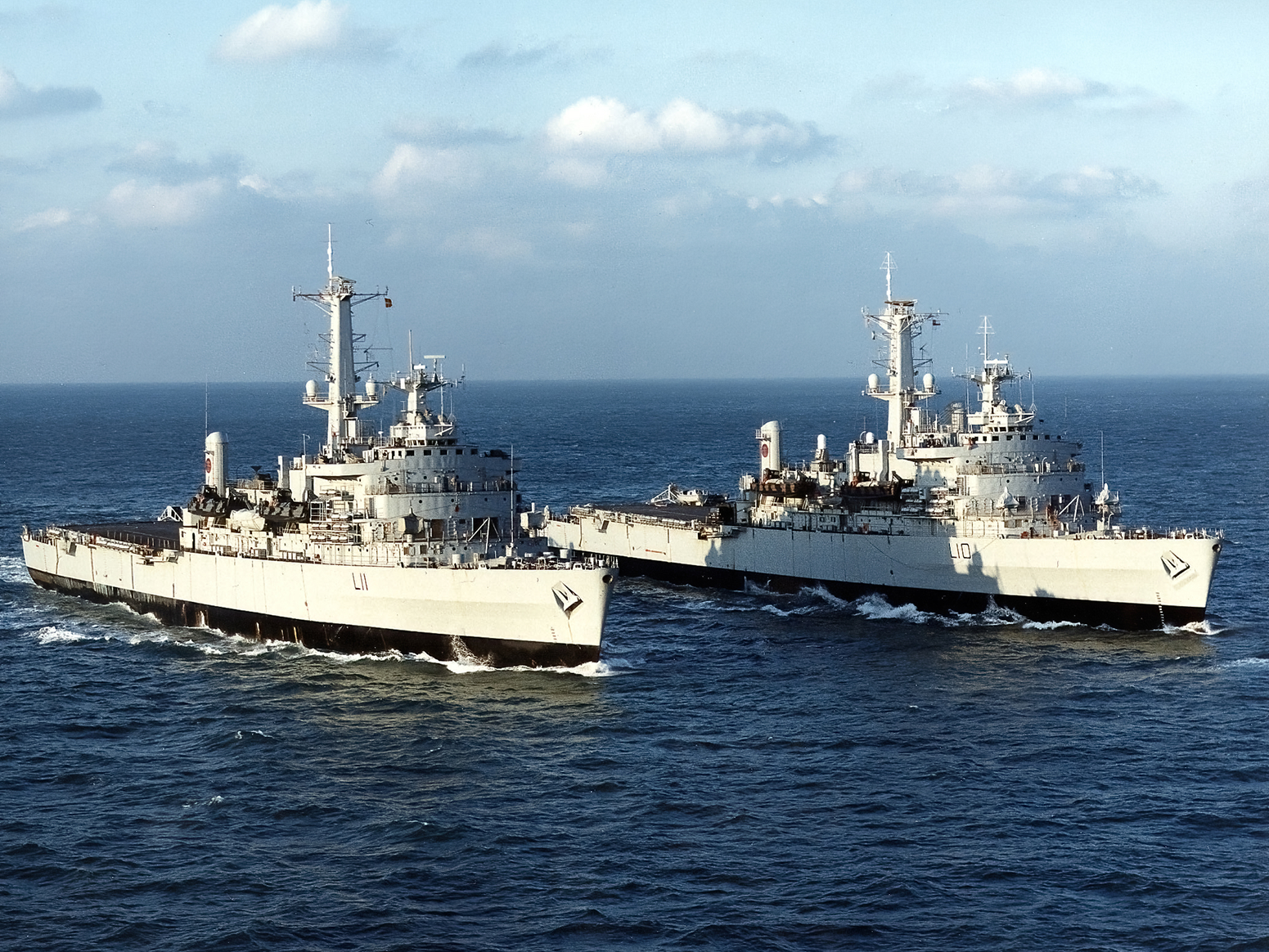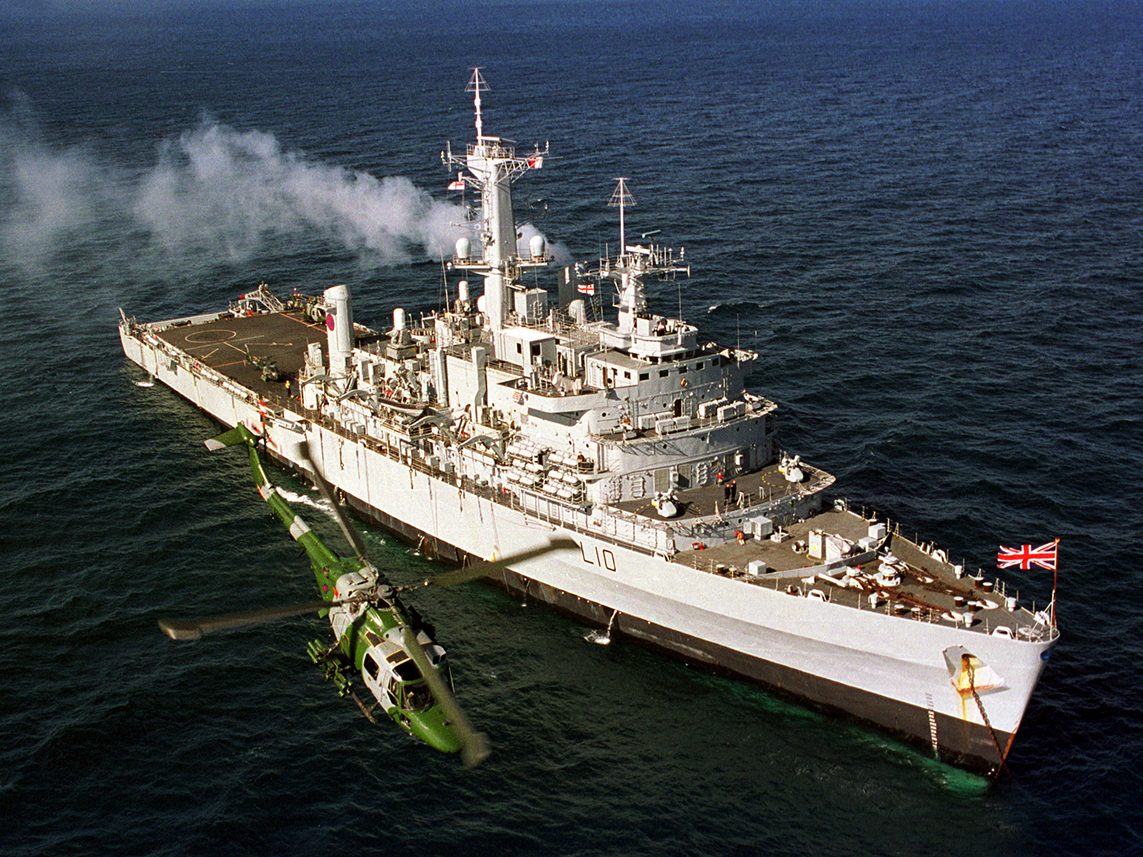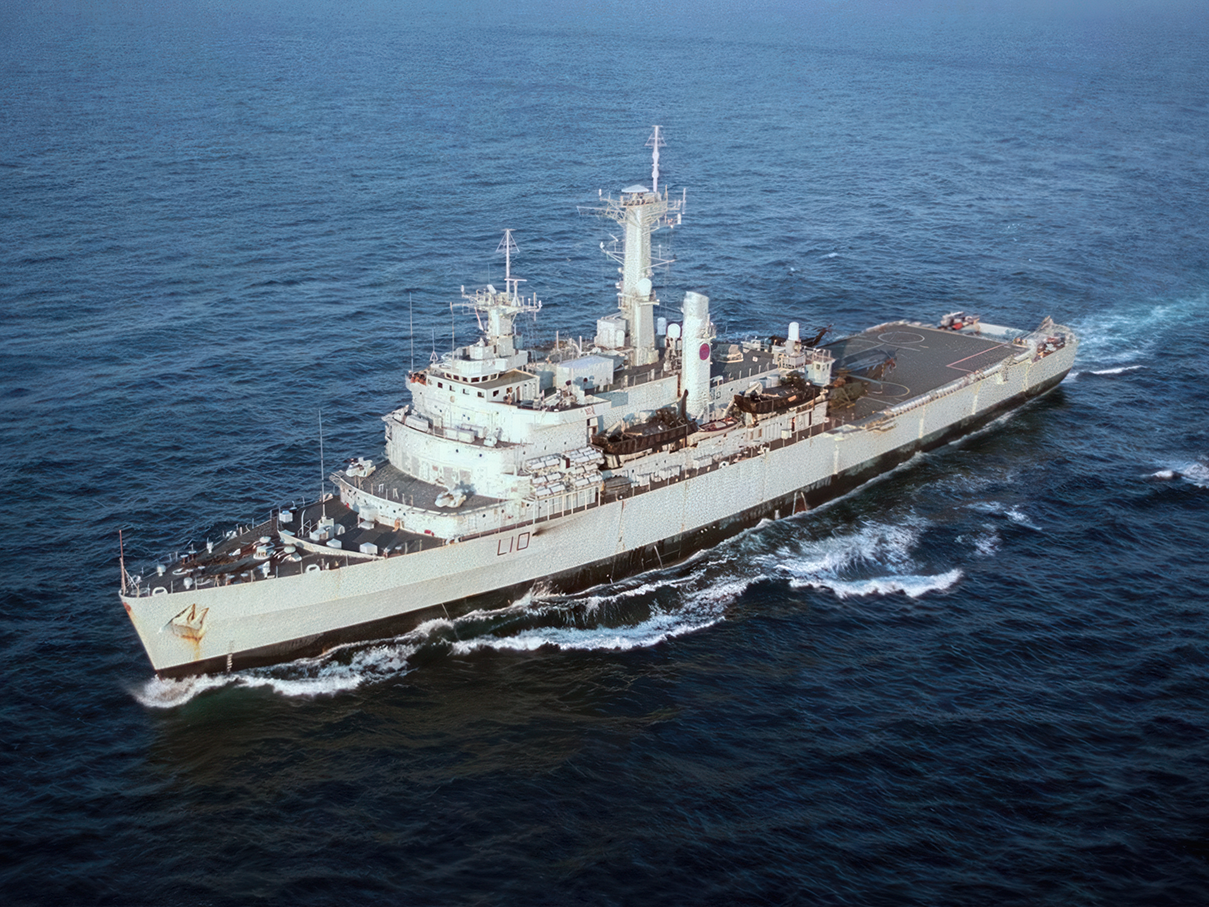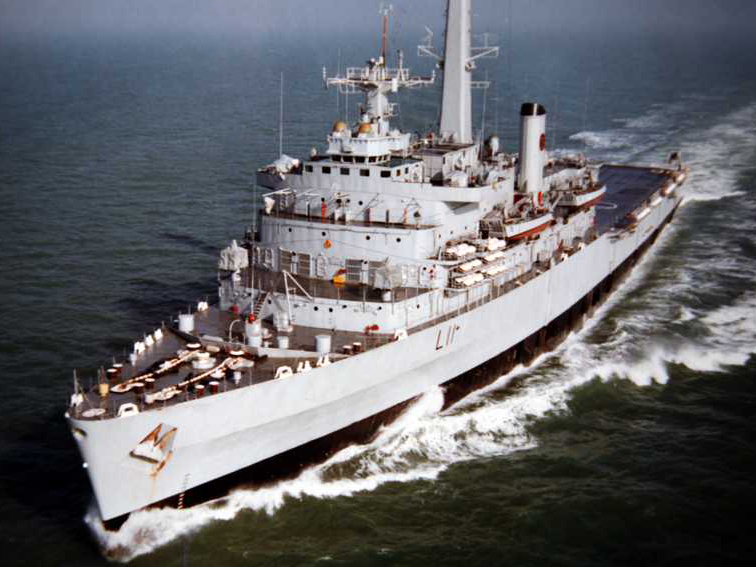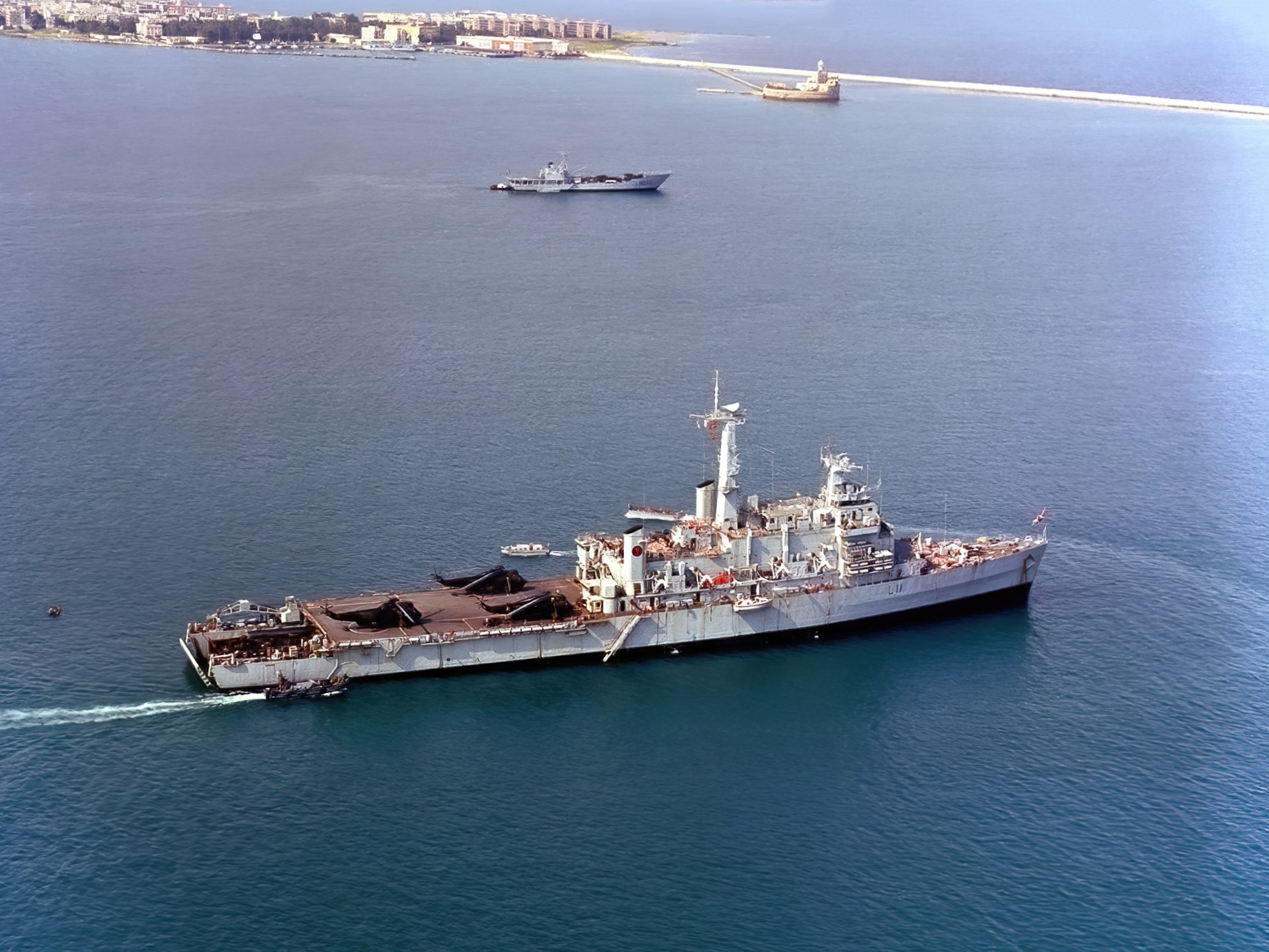Royal Navy Fearless Class Amphibious Assault Ships: A Comprehensive Guide
Introduction
The Fearless class amphibious assault ships were among the most distinctive vessels of the post-war Royal Navy. Built to land Royal Marines and their equipment directly onto hostile shores, they represented Britain’s first purpose-built Landing Platform Dock (LPD) design. The class consisted of two ships, HMS Fearless and HMS Intrepid, both of which served through the Cold War and played vital roles in the Falklands War and later humanitarian operations.
Origins and Design Development
After the Second World War the Royal Navy relied on converted warships and improvised transports for amphibious operations. By the 1950s it was clear that dedicated vessels were needed to meet modern requirements. The answer was the Fearless class, designed to carry troops, landing craft, and helicopters to deliver amphibious forces ashore with greater speed and coordination.
Each ship displaced around 12,000 tonnes and measured 160 metres in length. They were fitted with a floodable well dock at the stern, enabling them to carry and launch Landing Craft Utility (LCU) directly into the sea. Large vehicle decks and accommodation spaces allowed for the embarkation of a Royal Marines Commando Group along with their vehicles and stores.
The ships also featured extensive command and control facilities, enabling them to act as headquarters for amphibious task groups. This flexibility was central to their long and varied service lives.
Ships of the Class
The class comprised two ships:
Both ships became the backbone of the Royal Navy’s amphibious capability for over three decades.
HMS Fearless (L10)
Commissioned in 1965, HMS Fearless was the lead ship of the class and remained in service for more than 40 years. She quickly became a central part of amphibious exercises, often embarking Royal Marines and supporting NATO deployments.
Her finest hour came during the Falklands War of 1982, when she acted as command ship for the amphibious landings at San Carlos Water. Fearless directed the landings that successfully established the beachhead for British forces. Her embarked landing craft and helicopters carried men and equipment ashore under constant threat of Argentine air attack.
Fearless later took part in operations in the Balkans in the 1990s and humanitarian missions before decommissioning in 2002.
HMS Intrepid (L11)
HMS Intrepid entered service in 1967 and shared many of the same roles as her sister ship. Like Fearless, she was heavily involved in amphibious exercises during the Cold War.
HMS Intrepid entered service in 1967 and shared many of the same roles as her sister ship. Like Fearless, she was heavily involved in amphibious exercises during the Cold War.
In 1982 she too was deployed to the South Atlantic for the Falklands War, embarking Royal Marines and supporting the landings. Intrepid’s landing craft and crew were essential to moving men, vehicles and supplies across treacherous waters to the beaches of San Carlos.
She later served in peacekeeping and training roles before being withdrawn from active service in 1999.
Technical Features
The Fearless class introduced capabilities that transformed Britain’s amphibious operations:
Displacement: Approximately 12,000 tonnes.
Length: Around 160 metres.
Propulsion: Steam turbines with speeds of around 21 knots.
Well Dock: Capable of carrying four LCUs and smaller landing craft.
Vehicle Decks: Space for armoured vehicles, trucks and stores.
Helicopter Operations: Large deck area for troop-carrying helicopters.
Command Facilities: Full amphibious headquarters capability.
Troop Capacity: Able to embark around 400 Royal Marines plus vehicles.
This combination of features made them highly versatile for combat, peacekeeping and humanitarian tasks.
Operational Service and Legacy
The Fearless class ships served at the heart of the Royal Navy’s amphibious capability from the 1960s through the early 2000s. Their most famous service was during the Falklands War, where both vessels were indispensable to Britain’s victory.
In peacetime they were equally valuable, conducting NATO exercises, providing humanitarian aid, and acting as platforms for peacekeeping operations. Their long service lives reflected their robust design and flexibility.
By the early twenty-first century they were replaced by the modern Albion class LPDs, but their influence on amphibious doctrine and design continues. They demonstrated the value of purpose-built amphibious ships, setting a standard that future classes would build upon.
Conclusion
The Fearless class amphibious assault ships were trailblazers in British naval history. Purpose-built for amphibious warfare, they gave the Royal Navy and Royal Marines the ability to mount large-scale operations from the sea. Their decisive role in the Falklands War cemented their place in history, while their long peacetime service showcased their adaptability. Replaced by newer vessels, the Fearless class remains a testament to British naval innovation and the importance of amphibious capability.


